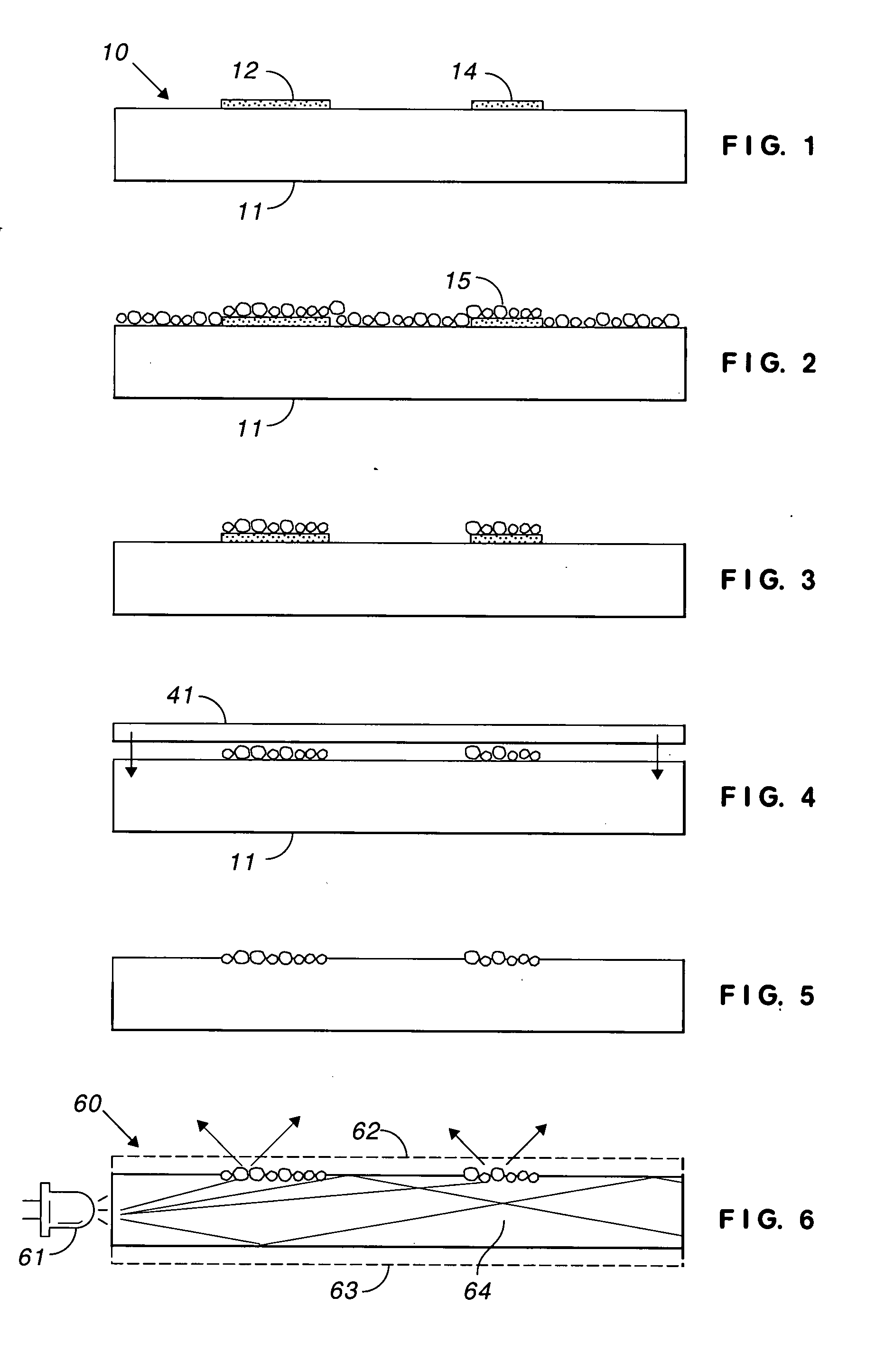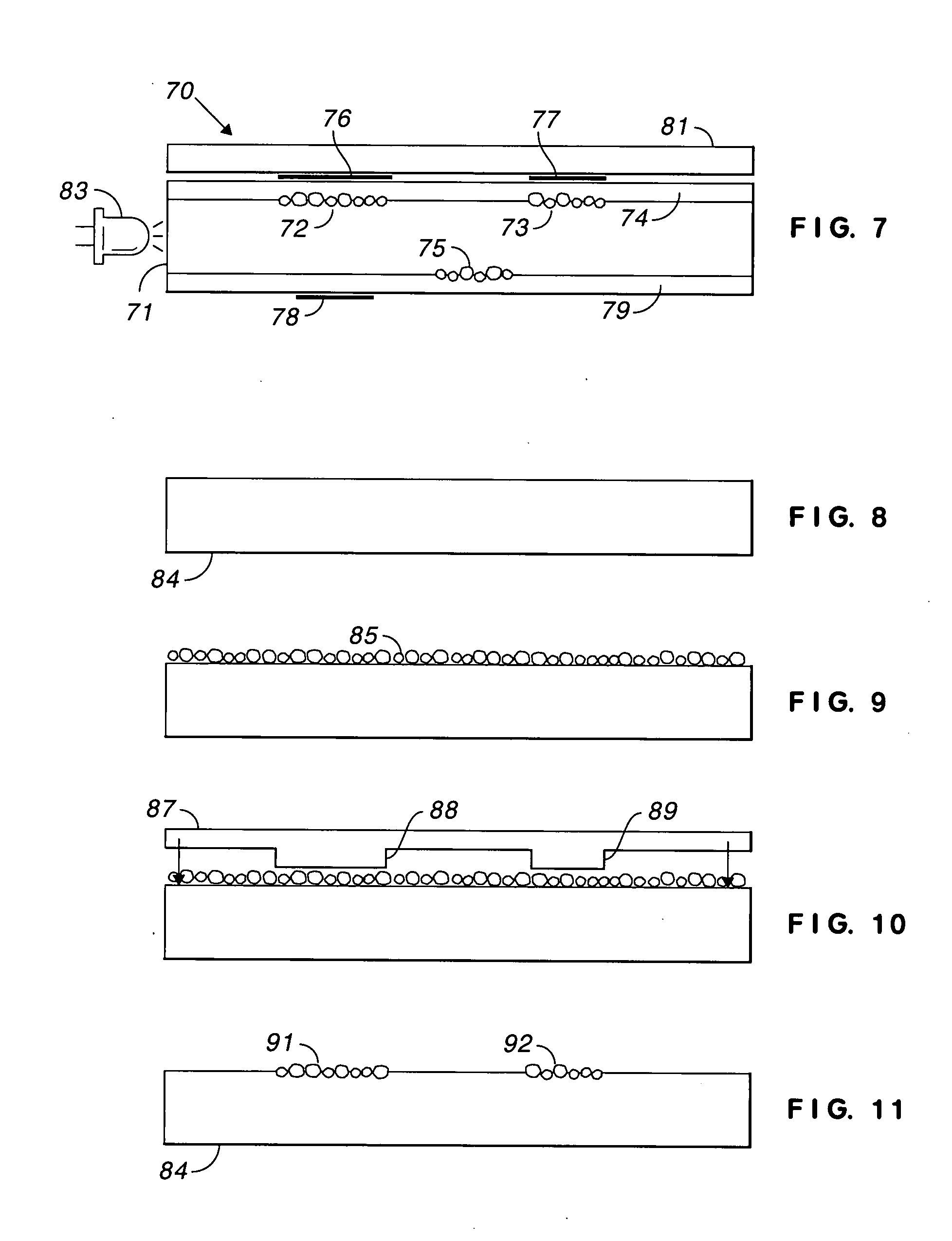Light guide with imprinted phosphor
a technology of imprinted phosphor and light guide, which is applied in the field of backlights, can solve the problems of phosphorescent or fluorescent materials, hot spots, undesirable stray light, etc., and achieve the effect of reducing costs
- Summary
- Abstract
- Description
- Claims
- Application Information
AI Technical Summary
Benefits of technology
Problems solved by technology
Method used
Image
Examples
Embodiment Construction
[0024]In FIG. 1, light guide 10 includes transparent sheet 11, such as glass or polymer, such as polyvinylidene fluoride (PVDF), polyester, or vinyl; preferably polycarbonate. The thickness of the transparent sheet depends upon application. Light guides have been constructed in accordance with the invention using sheets having thicknesses of 5, 7, and 10 mils (0.13 mm, 0.18 mm, and 0.25 mm). Other thicknesses can be used. The required characteristic is not polycarbonate or thickness but total internal reflection in at least one direction. The term “sheet” is used for convenience. The light guide can be a rod, a cone, a cylinder, or other shape. Any reference to geometrical shape is understood in a physical sense, not in a mathematical sense wherein, for example, a cylinder is a surface, having no thickness.
[0025]As known in the art, total internal reflection requires that the index of refraction of the light guide be higher than the index of refraction of the surrounding material. I...
PUM
| Property | Measurement | Unit |
|---|---|---|
| Adhesivity | aaaaa | aaaaa |
| Area | aaaaa | aaaaa |
| Transparency | aaaaa | aaaaa |
Abstract
Description
Claims
Application Information
 Login to View More
Login to View More - R&D
- Intellectual Property
- Life Sciences
- Materials
- Tech Scout
- Unparalleled Data Quality
- Higher Quality Content
- 60% Fewer Hallucinations
Browse by: Latest US Patents, China's latest patents, Technical Efficacy Thesaurus, Application Domain, Technology Topic, Popular Technical Reports.
© 2025 PatSnap. All rights reserved.Legal|Privacy policy|Modern Slavery Act Transparency Statement|Sitemap|About US| Contact US: help@patsnap.com



